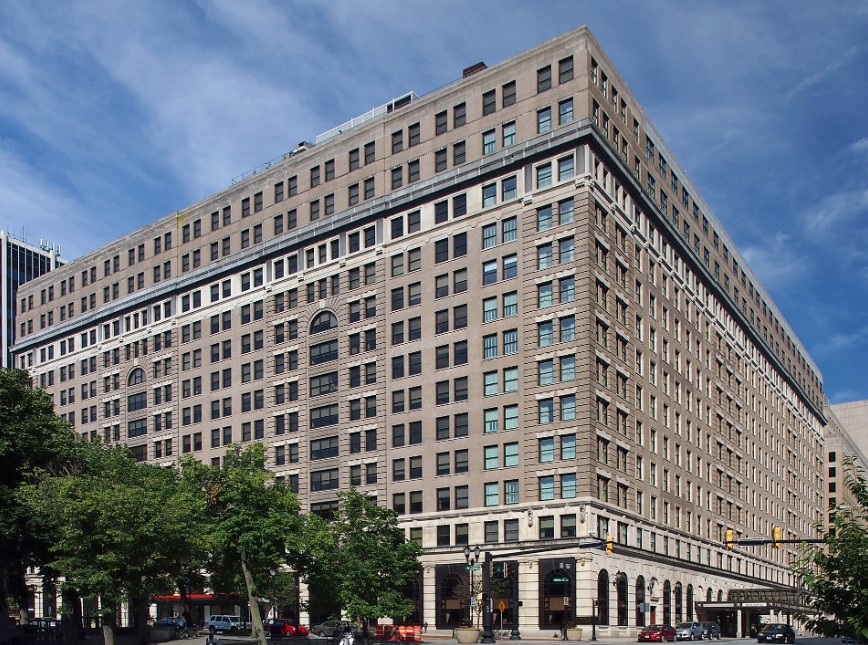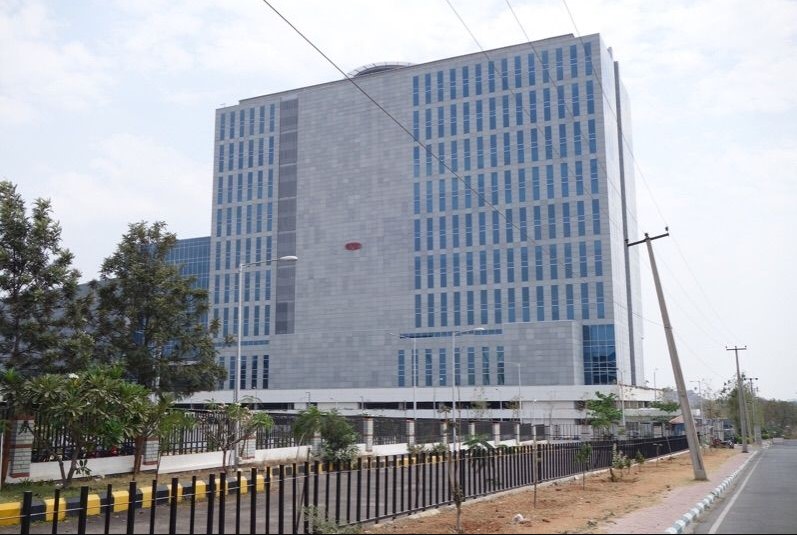Find Here DuPont Corporate Office Address, Phone Number, Contact Info, Email Id, Gmail Id Headquarters Info, Website Details, Read Customer positive and negative reviews and submit your Complaints. We have provided complete information below, which you may use to simply contact the relevant people. You won’t have to go further for information on DuPont Headquarters contact details. Please find all of the relevant contact information listed below.
DuPont Corporate Headquarters Address, CEO Email Address, and Corporate Office Info

Éleuthére Irenée du Pont de Nemours, the company’s founder, was born into French nobility. He trained under scientist Antoinne LaVoisier, who was in charge of the French government’s gunpowder manufacturing. In 1797, he immigrated to the United States due to the chaos before the French Revolution. He chose to locate his manufacturing facilities on the Brandywine River in Delaware because it was central to all of the states at the time and supplied sufficient water power to run the mills. Du Pont quickly earned a reputation for producing superb gunpowder. He died in 1834, leaving his sons Alfred and Henry to purchase the business from French financiers. His sons increased the company’s product portfolio by adding smokeless powder, dynamite, and nitroglycerine manufacturing.
One hundred years after its founding, the gunpowder and explosives conglomerate faced disintegration when senior partner Eugene du Pont died at the age of 62, following a 42-year career. Without a replacement leader, the remaining partners decided to sell the business to the highest bidder. Alfred I. du Pont, a distant cousin of the founder, acquired the business through the assistance of his cousins. Alfred was determined to resurrect the family business. While he had grown up in gunpowder yards, he lacked the organisational abilities necessary to run the business. Pierre S. du Pont and Thomas Coleman, his cousins, possessed financial ability and guided the family business to extraordinary success. The purchase price was established at $12 million, but covert cousin investigations revealed corporate assets worth at a cautious $24 million. Additionally, the former partnership controlled a substantial amount of undervalued stock in other businesses, including its immediate competitors in the gunpowder sector, Hazard and Laflin & Rand. Due to their lack of initial cash, the young cousins negotiated a leveraged buyout, which gave them a 25% stake in the new firm and a 4% payment on $12 million over the next 30 years. Coleman was president of E.I. du Pont de Nemours & Company, Pierre was treasurer, and Alfred was vice-president. The takeover cost only $8,500 in incorporation fees.
Within three years, sound management, good fortune, and hidden money culminated in the acquisition of 54 enterprises. Pierre’s goal was to establish dominance in the sector through payoffs and the acquisition of minority owners and vulnerable competitors. When the cousins founded the company in 1902, they controlled 36% of the US powder market. By 1905, it controlled 75% of the market. DuPont alone produced 56% of the nation’s explosives production; with an estimated $60 million in assets, it had grown to become one of the country’s greatest firms.
A new operating model was required to keep up with the organization’s rapid growth. The cousins enlisted the assistance of Amory Haskell and Hamilton Barksdale, managers who had streamlined their dynamite company. They restructured the ungainly organisation through the use of intricate family tree charts comprised of successive tiers of managers. The new organisational structure transformed American commerce and paved the way for the modern corporation. Pierre’s organisational method worked so effectively that he bailed out the floundering General Motors Corporation by purchasing 23 percent of the company’s stock and utilising the talents DuPont had acquired. (In 1951, the Justice Department compelled DuPont to divest its General Motors assets.)
DuPont expanded to become the market leader in explosives. By 1907, the firm had achieved such dominance that the US government started antitrust actions against it. In 1912, DuPont was declared a gunpowder monopoly and had to relinquish a significant chunk of its company. Additionally, the early years of incorporation were tumultuous between Alfred and his more pragmatic cousins. Arguments erupted over the Brandywine yards’ renovation. Coleman and Pierre believed that upgrading was the only way to maximise the plant’s efficiency. Coleman and Pierre removed Alfred’s responsibilities in 1911 as a result of the quarrel and other issues. Alfred was thus relegated to the position of vice-president in name only.
DuPont’s industrial era was defined by modernization, diversification, sound management, and market dominance. DuPont chemists’ experiments with a substance called guncotton, an early type of nitroglycerine, resulted in the company’s entry into the textile business. At the conclusion of World War I, it was demonstrated that the peacetime usage of synthetic fibres was more economic than explosives. DuPont obtained the French rights to manufacture cellophane in the 1920s. DuPont waterproofed it, transforming cellophane from a decorative wrap to a food and other product packaging material. In the 1920s, DuPont also manufactured the textile fibre Rayon and employed a stronger version of the fibre to make vehicle tyre wire.

DuPont gradually shifted its focus away from explosives and onto synthetic materials. Nylon, their most significant achievement, was developed in 1935 by a polymer research group led by Wallace H. Carothers. Nylon was synthesised on the basis of the premise that polymeric compounds were almost infinite chains held together by conventional chemical bonds. Long chain molecules could be constructed one step at a time by well-understood interactions between well-known classes of organic compounds.
Carothers chose a reaction that occurs naturally—alcohols reacting with acids to generate esters. Polyesters were synthesised by reacting molecules containing alcohol groups on both ends with similar acids. Superpolymers were later developed as a result of the employment of a molecular still to remove the water produced during the process. Excess water had established a chemical equilibrium, which halted reaction and constrained chain expansion.
Experiments using diamine-dibasic pairings resulted in the formation of a molten polyamide that could be formed into filaments, cooled, and stretched to form extremely strong fibres. Later, DuPont marketed a 6–6 polymer derived from the relatively affordable starting chemical Benzene. The new fibre was a resounding success. It was used to make underwear, stockings, tyre cable, automobile components, and brushes

At the conclusion of World War I, it was demonstrated that the peacetime usage of synthetic fibres was more economic than explosives. DuPont obtained the French rights to manufacture cellophane in the 1920s. DuPont waterproofed it, transforming cellophane from a decorative wrap to a food and other product packaging material. In the 1920s, DuPont also manufactured the textile fibre Rayon and employed a stronger version of the fibre to make vehicle tyre wire.
DuPont gradually shifted its focus away from explosives and onto synthetic materials. Nylon, their most significant achievement, was developed in 1935 by a polymer research group led by Wallace H. Carothers. Nylon was synthesised on the basis of the premise that polymeric compounds were almost infinite chains held together by conventional chemical bonds. Long chain molecules could be constructed one step at a time by well-understood interactions between well-known classes of organic compounds.
Carothers chose a reaction that occurs naturally—alcohols reacting with acids to generate esters. Polyesters were synthesised by reacting molecules containing alcohol groups on both ends with similar acids. Superpolymers were later developed as a result of the employment of a molecular still to remove the water produced during the process. Excess water had established a chemical equilibrium, which halted reaction and constrained chain expansion.
Experiments using diamine-dibasic pairings resulted in the formation of a molten polyamide that could be formed into filaments, cooled, and stretched to form extremely strong fibres. Later, DuPont marketed a 6–6 polymer derived from the relatively affordable starting chemical Benzene. The new fibre was a resounding success. It was used to make underwear, stockings, tyre cable, automobile components, and brushes

DuPont Corporate Headquarters Address and Phone Number
The company is based in City, Country. Do you have anything to share with the corporate headquarters? If yes, please take a note of the headquarters address of name Inc. below:
DuPont Corporate Headquarters Address: NA
How do I contact DuPont CEO?
Do you have any thoughts you’d want to share with Company Name’s CEO? Name of owner, the company’s current CEO, is looking forward to reading your views or suggestions. Please report your inquiries or complaints to the customer service department if you have any normal questions or concerns. daniel.a.turner@dupont.com.

Customer Support Email and Inquiry Form
For any general inquiries and complaints, please do share your feedback, and thoughts with the customer support team at the company’s official website. Please save this link to share your feedback about the last experience. It is one of the best ways to get in touch with the company’s customer support team.
Read Also: General Electric Corporate Office Address, Headquaters, Phone Number, Email ID, Address and more
Please share your opinions and views with the customer support team at the official website of the company if you have any general concerns or concerns. Please keep this URL and use it to express your thoughts on the previous experience. It’s one of the most effective ways to contact the company’s customer service center.
DuPont Contact Details
DuPont Headquarters Contact Details: NA
DuPont Headquarters Address: NA
DuPont Headquarters Phone Number: 1-800-476-3016.
DuPont Headquarters Whatsapp Number: NA
DuPont Headquarters Office Email ID: daniel.a.turner@dupont.com.
DuPont Social Profiles
DuPont Headquarters Facebook Fan Page: https://www.facebook.com/dupontco/
DuPont Headquarters Twitter Handle: https://twitter.com/DuPont_News
DuPont Headquarters Instagram Profile: https://www.instagram.com/dupont/?hl=en
DuPont Headquarters Snapchat Profile: NA
DuPont Headquarters YouTube Channel: https://www.youtube.com/DUPONT
